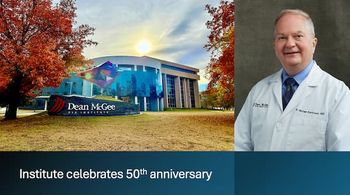
Dry eye symptoms return with cyclosporine cessation
San Francisco-Discontinuing the use of cyclosporine ophthalmic emulsion 0.05% (Restasis, Allergan), the only FDA-approved drug to treat dry eye, may result in recurrence of the signs and symptoms of keratoconjunctivitis sicca (KCS), and reinstitution of the drug is needed to reverse those signs and symptoms, John Sheppard, MD, reported at the annual meeting of the American Society of Cataract and Refractive Surgery.
"One of the most common questions I hear from patients is 'Do I have to use this drug for the rest of my life?' I really have had no distinct answer for them until recently. My impression is that dry eye is a degenerative disease. However, I explain this in terms of diseases such as glaucoma and hypertension for which we have a treatment specific to the disease, but not a cure," Dr. Sheppard said.
To try to answer the question about lifelong use of topical cyclosporine, Dr. Sheppard and colleagues conducted a study to determine if the drug could be discontinued without regression of the signs and symptoms of KCS once a maximal clinical response has been achieved. "We defined that maximal clinical response as using Restasis twice a day for about 1 year or more," he said. Dr. Sheppard is professor, Department of Ophthalmology and Microbiology and Molecular Biology at Eastern Virginia Medical School (EVMS), Norfolk and in private practice in Norfolk and Hampton, VA with Virginia Eye Consultants.
Forty-two consecutive patients, all of whom were women, were invited to participate in the study and 30 (71%) declined to do so because they were satisfied with the effects of the treatment. Dr. Sheppard included some patients who had been part of the FDA analysis and had stopped taking the drug for several years.
The new patients who were enrolled were examined every 2 months after they discontinued cyclosporine. Patients were given the option to reinstitute therapy with topical cyclosporine before the 6-month withdrawal period and several patients opted for this after 4 months; most, however, held out until 6 months had passed.
The investigators obtained confocal microscopy images at baseline when the patients had not been using topical cyclosporine for 6 months or more (range, 4 to 56 months). More images were obtained 6 months after topical cyclosporine was started again.
A total of eight patients participated in the study and another four patients were included for whom data collection was ongoing.
"The Ocular Surface Disease Index (OSDI) was the most important parameter, in that a statistically significant number of patients had an improvement, albeit in an unmasked study, in their OSDI scores after they reinstituted the cyclosporine for 6 months. Clearly, patients' lifestyles improved after they returned to treatment, despite the small sample size," he reported.
There was no statistically significant change in surface exam parameters because of the small sample size, although there was a trend toward significance. Corneal staining and the tear breakup time trended toward improvement in the latter, Dr. Sheppard said.
There was a significant (p < 0.05) improvement in conjunctival erythema at the 6-month time point.
Dr. Sheppard pointed out the remarkable utility of confocal microscopy in this patient population. He and Dr. Frank Lattanzio of the Thomas R. Lee Center for Ocular Pharmacology at EVMS demonstrated a dry eye-related increase in corneal stromal particulate matter.
Newsletter
Don’t miss out—get Ophthalmology Times updates on the latest clinical advancements and expert interviews, straight to your inbox.


















































.png)


